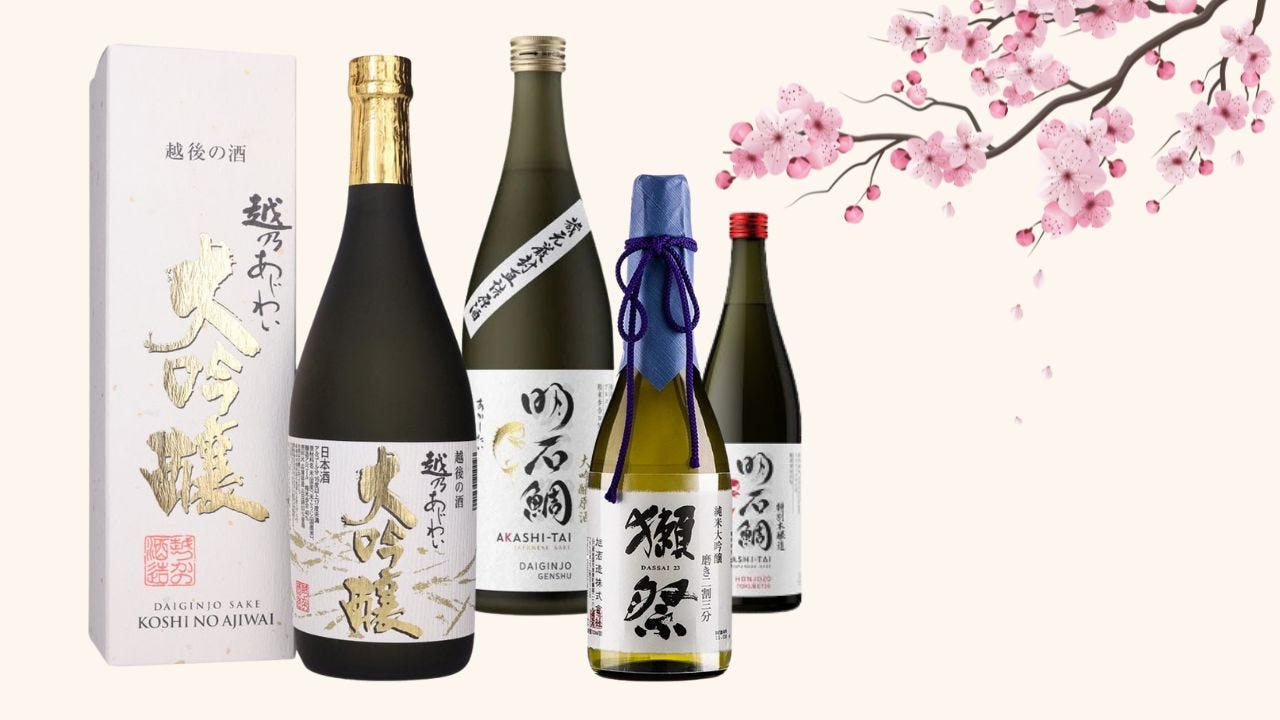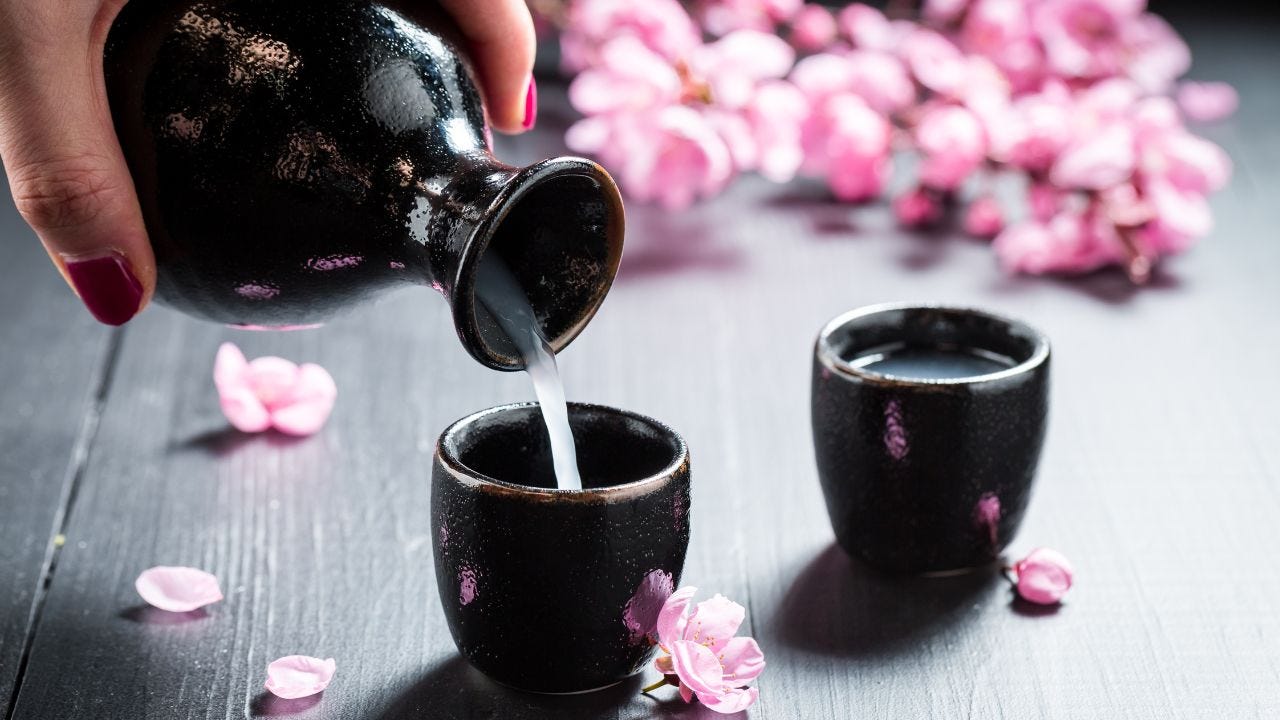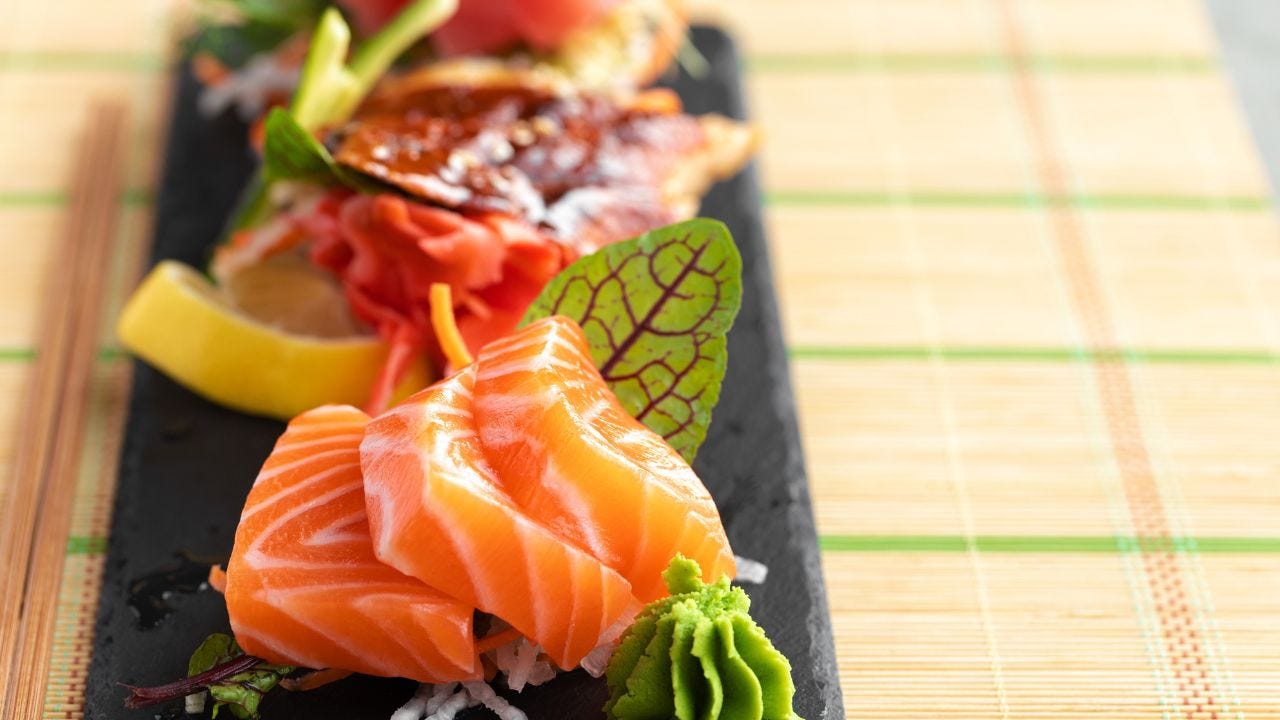If you haven’t tried sake yet, I fully suggest that you do. This ethereal rice wine - yes wine, not spirit - hails from Japan and high quality, fine sake is now widely available across the UK and US, offering us a much more interesting choice when we’re dining out or drinking at home. But let’s start at the beginning: what is Sake and why do you need to know?
What is Sake?
In a nutshell, Sake is an alcoholic wine made with rice and water. It looks very similar to wine made from grapes and typically has an alcohol content of between 13 and 17 % abv. It hails from Japan but recently, there have been sake breweries popping up elsewhere in the world, such as Kanpai in London and Dojima in Cambridge.
Sake is NOT a spirit and the very best Sakes should be drunk chilled like normal white wine, not heated up.
What does Sake taste like?
There are several styles of Sake but they generally share a similar quality of gentle earthiness and a touch of green melon. It’s umami in a subtle way. The closest wine equivalent I can think of to a classic style of Sake is a Muscadet. It also has a fabulous, weighty texture and is incredibly moreish, though could be an acquired taste for some.
Rice polishing and its effect on Sake
In Sake production, the ‘polishing’ ratio of the rice grains used is key to understanding the various quality levels. Here, we talk in terms of how much of the outer layer of the rice grain has been polished away before fermentation. This is because the outer layers contain fats, protein and minerals, while the inner core is mostly pure starch. More polishing generally leads to a cleaner, more delicate flavour so the more polished the grain, the higher quality the Sake! Here are the various levels of quality, based on polishing ratios and a few other things. Naturally, you can expect them to go up in price as you go along:
Futsūshu sake (普通酒) is the entry level stuff we often find heated up in Japanese restaurants. Usually made with rice that’s only slightly polished (90% or more remaining), it retains more of the fats and proteins from the outer grain, which can lead to rougher, less elegant flavours. Unlike premium sake, futsūshu may contain added alcohol, sugar, organic acids, amino acids and other flavour enhancers.
A step up from Futsūshu is Honjozo and Junmai, which both give earthy, everyday styles though in a more elegant and complex way.
Honjozo Sake (本醸造) is where approximately 70% of the grain remains. This is a style that’s quite earthy but a little cleaner than futsūshu with a small amount of distilled alcohol added to lighten body and boost aroma.
Junmai Sake (純米) comes next. When it’s a straight ‘Junmai’ style, it’s fuller-bodied, more earthy and umami-like even though no alcohol is added (‘Junmai’ means ‘plain rice’. ie. no added alcohol). There’s no legal limit to the polishing but it’s often to around 70% remaining or a bit lower.
Next up on the quality ladder are the Ginjo & Daiginjo styles, which are more aromatic and refined styles of Sake.
Ginjo (吟醸) translates as “Elegant brew” and here, 60% or less of the grain remains. A small amount of distilled alcohol added to lift aromas and create a clean, crisp style but there are no additives like sugar. These Sakes are light, fragrant and sometimes floral or fruity, showcasing banana, melon, or even apple flavours. Think of it like a crisp white shirt: elegant, but not extravagant!
Junmai Ginjo (純米吟醸) is an ‘elegant brew’ but without alcohol added, hence ‘Junmai’. Again, 60% or less of the grain remains and no additives are added. It’s also fragrant and clean like Ginjo, but with a rounder, richer mouthfeel with a little more depth and umami, making it more food friendly.
Daiginjo (大吟醸) ‘Dai’ translates as “great” or “very”, so this style is a ‘very elegant brew’, like Ginjo’s luxury upgrade; a designer shirt rather than just a nice one from M&S! Here, 50% of the grain is polished away and some alcohol is added. As a style, it’s highly refined, delicate, perfumed and often silky in texture.
Junmai Daiginjo (純米大吟醸) as you can probably guess, is again a ‘very elegant brew’ with 50% or more of the grain polished away, but as it’s also ‘Junmai’, no alcohol or additives are added. This is the most refined and expressive of all Sake. It’s pure, smooth and complex, with ethereal, elegant aromas and a soft, gentle finish. Welcome to the haute couture of Sake, crafted with precision and purity!
What About Aged Sake?
Aged Sake, known in Japanese as ‘Koshu’ (古酒), which literally means ‘old Sake’, is Sake that has been intentionally matured, often for several years unlike most Sake, which is designed to be consumed young, while fresh. Aged Sake instead develops deeper, richer flavours over time, often showing notes of nuts, dried fruits, soy sauce, caramel mushroom or even leather. Its colour may range from golden to amber due to oxidation and while there are no strict ageing rules like in normal wine, Koshu is typically aged for 3 to 10 years, either in bottles, tanks or casks. The result is a complex, contemplative drink with umami depth, often best enjoyed slightly warmed and paired with richly flavoured dishes like aged cheese, braised meats or even dark chocolate.
Taru Sake (樽酒) is again something different. This is sake that’s been aged or stored in a cedar cask (taru), traditionally made of Yoshino cedar from Nara. This gives it a distinctive woody aroma and flavour, often evoking notes of resin and spiced sandalwood. It’s usually based on Honjozo or Junmai Sakes but the cedar character is the star of the show. These can be challenging for new Sake palates but they do work well with richer food.
What to Eat With Sake?
The beauty of Sake is its versatility, both with food and without. In comparison to wine, it’s less acidic and less bitter and with a pronounced texture, so it sits with many foods very well and is not too much when tasted alone. Sake is never just Sake either, so the choice is huge. There’s dry sparkling, sweet sparkling and a wealth of still styles from the light, dry and floral to richer, darker, wood-aged wines. Below are some killer matches that I tasted recently that went well with non sushi dishes as well as some other suggestions:
Sparkling Sake
Ditch the Prosecco and try a sparkling, slightly sweet sake. If you pair this with a salty starter, like seriously good prosciutto or salty cheese, it absolutely sings as the saltiness complements the sweetness, balancing everything up nicely. We also tried this with calamari and a trio of dips. It was an excellent match with sweet chilli sauce and provided a really interesting match with the tzatziki-style yogurt dip, enhancing the flavours in the wine and the food. It would also be cracking with fish and chips!
Try: Akashi-Tai Junmai Sparkling Sake. £16.50 from Master of Malt.
Elegant & Aromatic Still Sake
If you prefer something a little drier, crisper and more aromatic, more akin to a dry white grape wine such as Muscadet, an elegant Junmai would be wonderful. You can have this alone or with some slightly salted nuts or crisps for a starter or even with a main dish, such as delicately flavoured cod. We tried this with a touch of melon, apple and sun-dried tomato, which let the sake shine. The flavours didn’t fight each other.
Try: Nanbu Bijin Tokubetsu Junmai Sake. £32.99 for 75cl from Londonsake.com
More Fruity & Floral, Vinous Sake
If you’re thinking you’d rather have something that would take the place of an unoaked, cool climate Chardonnay or even Viognier however, then this Junmai Daiginjo sake is the bomb. With a little more weight, with stronger peachy, melon notes and an almost oily texture, these sakes can take a little more flavour. Cod works, battered or otherwise. Chicken casseroles or roasted chicken or turkey make great matches too!
Try: Nabeshima Daiginjo Sake. £89.99 from Londonsake.com
Bolder, More Savoury and Weighty Sake
Here’s where sake feels a little different! ‘Taru’ sake is aged briefly in cedar barrels, which gives it a hint of yellow colour, makes it more textural and gives it more savoury, umami notes. This is a hefty sake that can stand up to meat or dishes like partridge with pomegranate, raisins and capers in curry sauce, as we found out. It was remarkable how the sake carried all those flavours seamlessly.
Try: Choryo Yoshino Sugino Taruzake, £49.99 from Amazon





